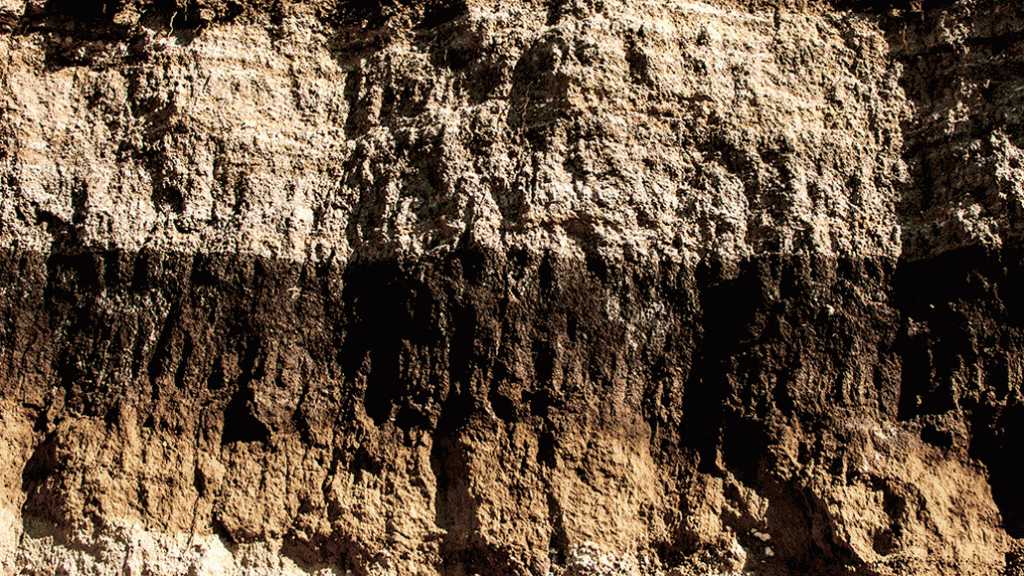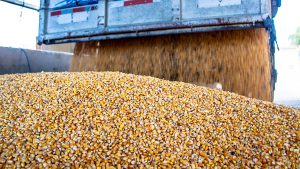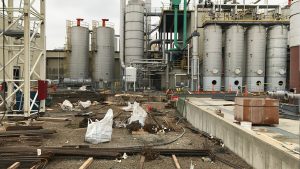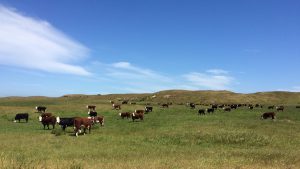Soil form and function
A FARMSMART 2018 PREVIEW

DEGRADED SOIL CAN still give you high yields but those yields come at a cost. Those soils are less resilient, less able to handle stress such as drought or heavy rain, and require more inputs.
Organic matter can help, but how?
Ray Weil is a professor of Soil Science at the University of Maryland where he delves into the relationship between soil form and function. More specifically his research encompasses soil organic matter management, sustainable cropping systems, and soil management for improved nutrient and water cycling.
Organic matter works physically, biologically, and chemically to allow you to increase crop yields at a lower cost, says Weil, reducing the need for inputs such as fertilizer and reducing the susceptibility of fields to extremes in weather variation. While you can’t do much about soil texture — clay soils will always be clay — you can do something about organic matter.
In terms of structure, organic matter helps to physically support the ability of soil to manage water, which is the number one limitation in plant production. In the last 50 years, the average annual precipitation in Eastern North America has increased and a lot of that precipitation has come as intense downpours. We are left to try to manage conditions that Weil calls, “remarkable and erratic.”
CONTROLLING WATER
Water needs to both filter through and be held in storage for later use; these opposing physical functions rely on organic matter. As Weil explains, healthy soil is at least half pore space. Organic matter holds the crumbly aggregates together. The macropores in between the aggregates allow water to drain and air to reach the roots; micropores within the aggregates hold water like a sponge.
The biggest payback of healthy soil comes during extremes such as a three-inch rain early in the growing season where healthy soil will transmit nearly all of the water down into the profile while resisting erosion. In the hot, dry days of August, that same water stored deep in a healthy soil will minimize drought stress. In addition to holding more water, soil organic matter also helps soil to resist compaction, allowing crop roots easier access to that deep water.
SOIL ORGANISMS
Organic matter also serves a biological function as food for the soil organism community. One thing they all have in common is that soil organisms all need to eat. Some eat our plants; some eat each other. There are organisms you can see, like earthworms and mites, but the microscopic fungi and bacteria that you can’t see need to eat too.
These microorganisms and critters work hand-in-hand. While their ecology is complex, ultimately they feed on organic matter to make bound nutrients such as nitrogen, phosphorus, and sulfur available.
“Building soil organic matter and the soil microbial community increases the efficacy of nutrient cycles, allowing high yields with less fertilizer,” says Weil. In other words, let the organisms do some of the work for you.
NUTRIENT AVAILABILITY
Chemically, organic matter plays an important role in nutrient availability. The cation exchange capacity (CEC) reflects the ability of the soil to hold positively charged ions (cations) such as calcium, magnesium, potassium, zinc, iron, and manganese. If the CEC is reduced these cations will leach away. The soil CEC comes from both clay and organic matter; in many types of topsoil organic matter contributes more than half of the CEC.
“That’s where we have some control,” says Weil. “The amount of clay in the soil is a given but we can influence the amount of organic matter.”
Soil organic matter provides 10 to 20 times the CEC per unit weight compared to the mineral part of the soil. That means that a 20 per cent clay level in soil will contribute the same CEC as a two per cent level of organic matter. Chemically it acts the same as the clay but without the disadvantages of stickiness. As Weil says, clay is good for making pottery but can be miserable to work with in the field.
The physical benefits rely on maintaining or increasing organic matter but the biological benefits rely on the consumption of organic matter. We need to build it and consume it simultaneously. Is that possible? Yes, says Weil, but we haven’t been doing a good job, which has led to a lot of depleted soils.
Weil’s ecological approach to soil science includes improving cropping systems using innovative cover crops to increase biodiversity and improve soil health. He has co-authored the textbook ‘The Nature and Properties of Soils’ with Nyle Brady, now in its 15th edition; developed a soil test for active soil organic matter, and worked in North America and Africa to diagnose soil fertility problems. Weil is a fellow of the Soil Science Society of America and the American Society of Agronomy and has twice been awarded Fulbright Fellowships to support his work in Africa.
As the keynote speaker at NutrientSmart, Weil will discuss the foundations of soils and soil fertility and the plant-soil-nutrient interactions that tie soil management to soil health.
At FarmSmart 2018 he will lead an in-depth discussion of soil organic matter — what it is, how to build it, and how to make it work best for your soils. •











